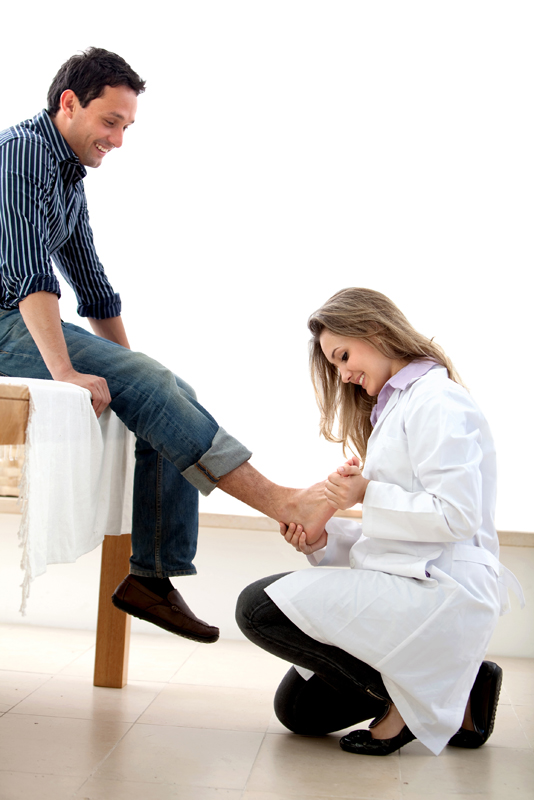Get Relief from Hammertoe
Talk with Your Doctor About Getting Relief from Your Hammertoes
People from many different walks of life suffer from the deformity of hammertoes. If you have recently been diagnosed with this condition, you may get some comfort knowing that you are not alone in your suffering. This knowledge might also help you to feel more comfortable as you discuss your hammertoe treatment options with your podiatrist.
Typical Causes and Symptoms of the Hammertoe Condition
The most common toe to be affected is the second toe, but others may also move into the claw-like shape. The most common reason behind the presence of one or more hammertoes is the use of shoes which don’t fit correctly. The condition is more prevalent in women, who tend to wear tight, constricting shoes and shoes with high heels. Children might be affected if they continue wearing shoes after they have grown out of the shoes. There are also cases of congenital hammertoes; a proclivity toward the condition is handed down from one family generation to another.
The symptoms generally include:
– An upwardly bent middle joint
– Corns on the tops of the toes
– Calluses on the sole of the feet
– Pain when walking and while wearing shoes
– The inability to straighten out the toes
Your Treatment Options
Treatment for Mild Hammertoe Conditions
Finding relief from the hammertoe condition will generally begin with a visit to your doctor. If the pain gets unbearable, you should get urgent care at the Medical Center of Marin right away. The doctor will exam your toes, determining how far along the condition is, and whether or not minor changes could provide you some relief. Some of the minor changes might include wearing shoes which are comfortable and which fit appropriately. Your doctor might recommend that you quit wearing high heels, if this has been an issue. Soft insoles may also provide some relief, as will cushioned pads to provide protection for the raised joint.
Treatment for More Severe Conditions
The course of treatment for severe conditions may include the use of hammertoe regulators, straighteners, or hammertoe surgery. Your doctor may also advise that you begin to do some exercises to stretch your toes into their appropriate positions.
In some cases, hammertoe surgery will be the best solution. Surgery usually involves either cutting or moving the tendons and ligaments of the toes. Sometimes correcting the condition will require the fusion of the bones on either side of the joint. According to Victorian Bone and Joint Specialists’ orthopaedic surgeons, most people who undergo surgery for hammertoes will return home on the same day which they had the corrective surgery.
Following Your Treatment
Whether your condition can be corrected using conservative changes or if your hammertoe treatment requires surgery, you can expect to experience the alleviation of pain and walking should become easier. The prognosis for complete relief is higher if you have sought treatment for your hammertoes early on. However, even if you have waited until surgery is a necessary course of treatment, you should still be able to look forward to the relief of pain and easier mobility.













I have never heard of this condition before. I’ll have to make sure my son doesn’t wear any shoes that are too small.
All good points! A podiatrist specializes in the foot and ankle and can best treat hammertoe deformities. If treated in time, it can be alleviated without the need for surgery, so it is very important to wear well-fitting shoes (for all ages, men and women alike) and seek help as soon as you can. You can read more here http://santamonicapodiatry.com/project-view/bunions-hammertoes/
There are various simple ways to reduce the problem of hammertoe. It is necessary to avoid shoes with pointed toes, high heels. It is better to choose comfortable shoes. Injection therapy, Medications are also useful for hammertoe problem. It is very necessary to take advice from podiatric surgeon.